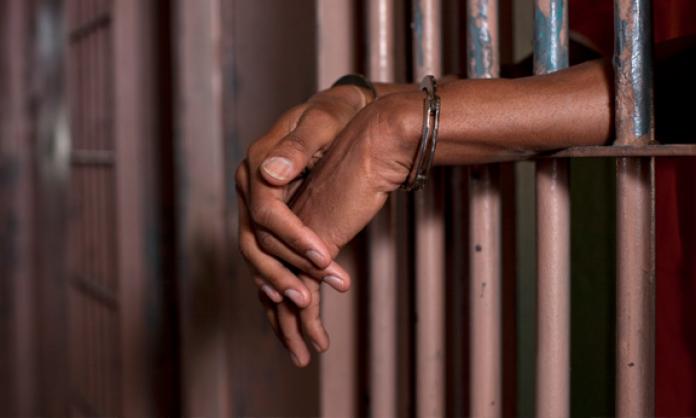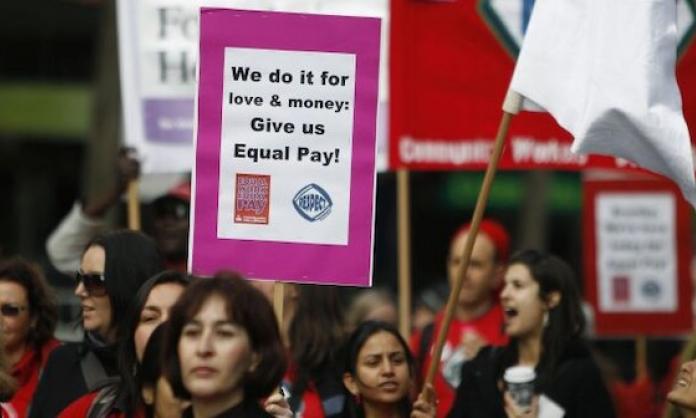The first time Vickie Roach had a serious encounter with the criminal justice system, she was 17 years old. It wasn’t the first time she’d been put in a cell, but it was the first time the charges stuck.
She’d been doing sex work in Kings Cross, Sydney, for a couple of years and had developed a heroin habit. One night she handed money to someone to bring her another hit (a rookie mistake, she tells me, but she sort of trusted the person). While she waited for her acquaintance to return, a cop car pulled up and four officers swooped and bundled her up.
With no paraphernalia or drugs on her, the police carted her away on nothing but suspicion. She was thrown into the central cells in the city.
“Down Market Lane?”, she struggles to recall. “It was a little lane, off George street.” The conditions, though, she remembers well.
“These things were convict-built; they were like dungeons – evil, disgusting, horrible places. They remanded me at first, for two weeks. So, I thought, ‘OK, they’re trying to throw a scare into me’. The day before I went to court, I gave all my shit away: all my cigarettes, everything, ’cause I thought I was getting out. But they put me back in for six months”, she says.
When she was 18, one of her friends inside died of an overdose. She was passed some barbiturates during a visit and had swallowed them, but they weren’t wrapped up properly. She ended up having to have her stomach pumped.
When she returned she was put in a cell within hearing distance of Vickie and her other friends. They couldn’t see her, but they could communicate. At first they laughed as she gave the screw a hard time.
The screw, according to Vickie, wasn’t up to the task. Scared of the inmates, she was “probably one of those types that goes to church on Sunday and wears one of those bloody stupid hats”, Vickie says. “She was never meant to be in a prison.”
The screw was put in front of the woman’s cell and given orders to check on her every three minutes.
At first Vickie and the others could hear her yelling at the screw to give her a cigarette. They were all calling out to the other inmate, having a chat and a laugh. But eventually, she fell silent.
They yelled at the screw to check on their friend, but she refused. She called some higher ranking staff and waited until they came. Apparently an ambulance came and went, the official explanation being that they refused to transport a dead body. Eventually another vehicle showed up. They wrapped her in a blanket and took her away.
Vickie’s face lights up when she talks about various escape attempts by her fellow inmates.
“We had a girl escape from Silverwater once. Bimbo, her name was. A Koori girl, I think she was from Brewarrina. Bimbo from Bree. I can’t even remember what her real name was. She was one of them short, chubby chicks.
“She used a doormat to get over the razor wire. But how she got over that fucking barrel, I don’t know. They had these big corrugated iron barrels that, if you tried to get onto them, they would just roll. But she managed to get over! But then her knees knocked her in the head on the way down and she knocked herself out.
“The women’s prison was inside the men’s prison, so she landed on the ground where the blokes were on work release. They found her out cold and hid her until she came to and helped her get out. I think she was out for three months!”
Over-representation
Vickie is now a prominent activist, as well as a writer, poet and public speaker. Since her last release from prison in 2008, she has thrown herself into the cause of social justice. Her most recent collaboration, with the Human Rights Law Centre, is Over-represented and overlooked: the crisis of Aboriginal and Torres Strait Islander women’s growing over-imprisonment. The report reveals some stark truths.
Today, Aboriginal and Torres Strait Islander women make up 34 percent of incarcerated women, but only 2 percent of the adult female population. Their imprisonment rate has increased 148 percent since 1991 – when the findings of the Royal Commission into Aboriginal Deaths in Custody were handed down – and they are currently imprisoned at 21 times the rate of non-Indigenous women. The report also notes the effects of successive “law and order” campaigns:
“The result of punitive ‘tough on crime’ approaches is a swelling of prison populations – caused more by an increased use of and reliance on imprisonment rather than increases in crime. For example, an increase in Aboriginal and Torres Strait Islander people’s imprisonment in NSW between 2001 and 2008 was found to be the result of more frequent use of imprisonment rather than an increase in offending – 25 percent of the increase was caused by greater use of remand and 75 percent because more Aboriginal and Torres Strait Islander people were sentenced to imprisonment and for longer periods.”
Vickie saw women held for months at a time on remand – sometimes three, sometimes six, sometimes even more.
“I’ve been held on as little as 500 bucks. Actually, fuck, I’ve been held on 50!” Vickie laughs when she talks about herself. Even as she tells tale after tale of horror from her time locked up, her mood isn’t soured.
“My first job when I went to jail was sewing shrouds for paupers. You know, for poor people. Like, how many of us were gonna end up in one of those?”, she ponders with a cackle. “Then they’d give you a certificate for dressmaking when you got out! The next job was sewing Australian flags – sewing the stars on Australian flags.”
What a bitter irony, women who had been so oppressed by the Australian state and all its institutions, compelled to decorate the flag. But Vickie, in standard fashion, finds the silver lining.
“Those were government jobs”, she says. “Better than the private companies people are forced to work for now.”
She insists that people today have it worse. “They’re still doing everything they did to us back then, and more. We never had spit hoods or anything”, she says, referencing the recent case of Dylan Voller in the Northern Territory.
“All those women who were on remand … They would have lost their houses”, she says, recalling the plight faced by women in decades past who were locked in Victorian prisons but who lived in housing commission flats.
“If you went to jail, say, for three months – if you had someone on the outside who could pay that 15 bucks a week, you could keep the house. But, otherwise, you’d lose everything”, she says. The erosion of public housing means that jail time now is more likely to result in people losing everything.
“Now, with this permanent placement bullshit [a recent Victorian Labor government initiative giving the Department of Human Services the power to remove a child permanently from their mother, after an order is made by the Children’s Court], if your kid’s not with you or your kid’s in foster care for more than 12 months, you lose all parental rights. And it’s not even confined to Aboriginal kids this time, it’s all kids”, she says.
Vickie is keen to bring it back to the broader issue at hand, the topic of the recent report she’s helped to put out.
“Chicks that are doing years get real hard. Re-integration is really important. We all lose everything when we go to jail. Even six months, to someone who’s not used to prison, is a lifetime – but I wouldn’t try telling that to someone with a life sentence.”
What’s the solution? The report makes many recommendations, but one aspect Vickie makes clear in her introduction:
“The criminal justice system damages women, children, men, entire communities. Governments need to get rid of laws that are criminalising so many of our women … Governments should be looking for ways to close prisons … We know the solutions – investment in housing, education and health – that’s what makes a difference and helps communities stay strong and healthy.”








